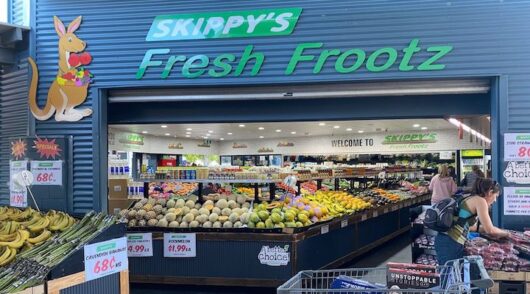Expanding internationally is a rite of passage for Australian retailers, marking their step up from local players to global contenders. To successfully make the transition into global markets, the best brands understand that no matter how far and wide they grow, maintaining a local feel will foster deeper connections with customers and better resonate with their cultural identities.
This is why many growing retailers adopt ‘glocal’ strategies, a nuanced approach to expansion that blends the best of global reach with local adaptation. In essence, acting ‘glocal’ acknowledges the importance of building a strong global presence while simultaneously tailoring products, services, and marketing strategies that best resonate with the unique preferences and cultural nuances of local markets.
Tailor customer experiences to local regions
New geographies, demographics, and languages require different approaches. Before stepping foot in any new market, retailers should invest in thorough market research to understand the unique preferences and behaviours of local consumers. Armed with these insights, you can then tailor your product proposition, services and brand marketing to align with these preferences while staying true to your brand identity.
Market products to the different seasons
Tailor product launches and marketing efforts to the unique characteristics of each market. For example, the weather disparity between Australia and the US, demands that brands offer season-appropriate products. When summer is in full swing in Australia, launching a new swimwear range to your US customers in snowy New York is unlikely to drive sales.
Segment customers within each new region
While it may be tempting to simply segment customers around a new geography, it oversimplifies reality. Instead, create smaller, more nuanced segments that better reflect diverse customer preferences across the new markets, just as you would do on Australian shores.
Language barriers and customer expectations
Expanding across borders requires support for multiple languages and diverse customer expectations. This involves both translating content but also localising it to reflect local idioms, cultural references, and shopping habits. For customer service expectations consider adapting return policies, payment methods, and delivery options to meet local norms and preferences.
Put the right technology in place
Prioritise building robust foundational processes and systems before expanding into new markets. This includes having clear processes in place, understanding legal frameworks, employment and tax regulations, and other logistical considerations.
Process standardisation
Any expansion initiative is going to require scalable systems. Building new systems for each new market will quickly bring your plans to a grinding halt. A unified tech architecture that draws all corners of your soon-to-be global business together will allow you to add new entities, warehousing capabilities, and integrate diverse systems, ensuring scalability and efficiency as you expand. This approach also provides a single view of operations, across all geographics and allows workflows to be standardised and, in many cases, automated to ensure consistency and efficiency at scale. By consolidating systems and standardising business processes, your business systems become growth enablers, not roadblocks.
Supply chain complexity
Global markets add layers of complexity to supply chain operations. Coordinating logistics, warehousing, customs procedures, and cross-border delivery, demands meticulous planning and coordination. Just as consolidated business systems help to standardise processes, integrating advanced logistics platforms delivers real-time tracking and inventory management giving that much-needed transparency across the supply chain, and into each new market. You can also establish partnerships with local stakeholders to gain more practical insights into regional regulations and market intricacies.
Engage with technology partners
When evaluating new business systems, seek out system integrators who understand not just software but also the solutions required to support international growth. A good tech partner will provide valuable guidance and support throughout the implementation and onwards as you expand and grow.
‘Glocal’ strategies emphasise the importance of maintaining a local feel while expanding internationally, recognising that deep connections with customers are built on cultural resonance. By understanding and embracing these differences, retailers can build stronger connections with international audiences and leverage technology to deliver personalised and seamless customer experiences that drive their growth and success.
Want more insights?
Annexa recently had the opportunity to co-host a webinar with Nora: “Unpacking Tiger Mist & MAAP’s tech strategy for global growth”. Hosted by Lydia Bertini, head of customer and people for Miss Amara, the panel included Michael Ciavarella, chief technology officer at A&S Labels (Tiger Mist & I Am Gia), Matthew Nott, chief finance officer at MAAP and Annexa’s own Matthew Owens.
You can catch the on-demand recording here. Or if you’re ready to navigate the waters of international retail expansion, speak to Annexa about readying your foundational tech.
About the author: Matthew Owens is director of sales and marketing at Annexa.






